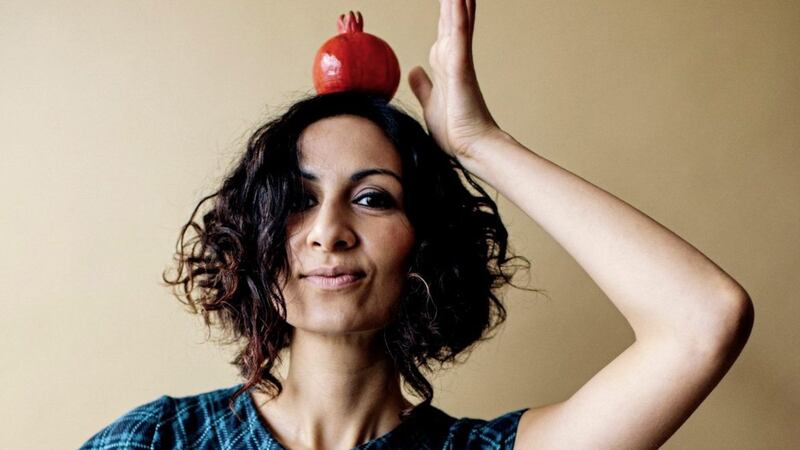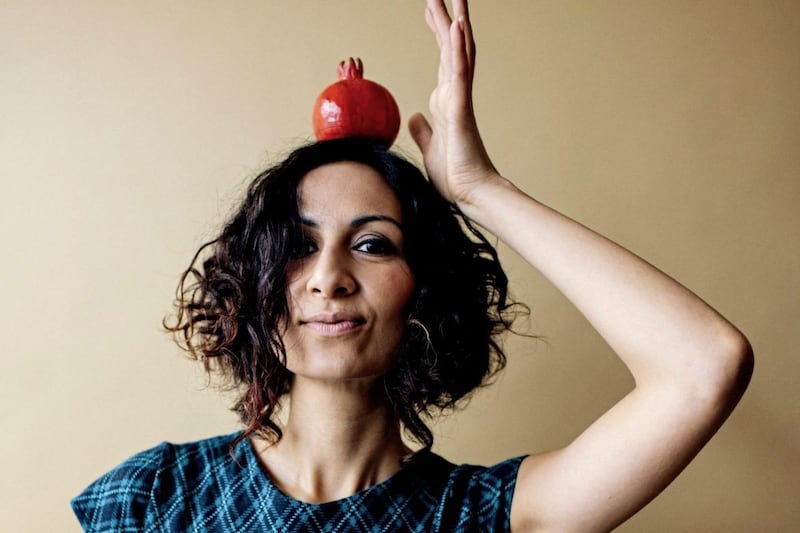2018 has undoubtedly been a big-hitter year for cookbooks. We've had Jamie Oliver's epic Jamie Cooks Italy, which saw him and mentor Gennaro Contaldo travel across Italy for two years, collecting the precious, home-kitchen recipes of Italian matriarchs.
Yotam Ottolenghi – a chef who regularly has food fans scouring supermarkets for sumac and pomegranate seeds, and who is known for his many, many ingredient recipes – pared his food back considerably with Simple (sumac still required).
Nigella Lawson re-released her seminal 90s cookbook, How To Eat; Tom Kerridge had us all losing weight for good; while YouTube duo BOSH! made veganism actually quite decadent.
But what of the cookbooks that didn't quite have an accompanying telly series or a royal seal of approval, that nevertheless have been slowly and subtly affecting our palates?
Let these under-the-radar recipe collections pique your interest and taste buds now, and into the new culinary year...
Our top 3 not to be missed...
1. Black Sea by Caroline Eden (Quadrille)
This is less a cookbook, more a selection of lyrically named, seductive essays ('A Synogogue Of Lemon Sellers', 'Jam On A Roman Road', 'Jazz And Russian Lace'), interspersed with food that comforts and soothes (onion soup, sea bass stew, black sesame challah).
It charts Edinburgh-based journalist Caroline Eden's journeys along the outline of the Black Sea, focusing in particular on the cities of Istanbul, Odessa and Trabzon, and what the people there eat. She captures historical changes and their culinary impact, explores how traditional cuisines have morphed or stuck, and inserts snippets of menus (from Tsar Nicholas II's Constanta imperial gala for instance), poetry, stories and musings.
It is designed to be read in one long breath, like a novel; one intent on making you both wanderlust and hungry for a kaleidoscope of eating habits that have been largely ignored until now.
2. Zaitoun by Yasmin Khan (Bloomsbury)
Zaitoun is former human rights campaigner Yasmin Khan's second book. Her first, The Saffron Tales, investigated the goings on in Persian kitchens, while in Zaitoun she noses gently into the culinary spaces of Palestinians, at all times infusing her writing and recipes with political awareness and sensitivity.
Fresh herbs abound – whether in bulgur wheat salads or deep-fried aubergine and feta kefte – there are zingy pickles and roasted, spiced meats, alongside Khan's discoveries and experiences of a region both fraught, and filled with fragrant cooking.
3. Asma's Indian Kitchen by Asma Khan (Pavilion)
Asma Khan swapped Calcutta for Cambridge, and after finding herself in tears over the distance between herself and ghee-fried parathas, started a supper club, which has since become a restaurant, Darjeeling Express. Khan serves the kind of ordinary food eaten in homes in India, which is quite separate from the heavy, creamy – if still delicious – dishes you'd generally order from the takeout. Asma's Indian Kitchen is built around recipes that are straightforward and uncluttered, where every ingredient has its place.
There are muted-yellow potatoes with cashew nuts; pureed aubergines smoky with chilli and zhuzhed up by ginger; bright pink beetroot raita, green beans dancing with cumin seeds, and golden masala omelettes. It is calming, thoughtful, and reassuringly filling food.
But don't forget these ones either...
Strudel, Noodles And Dumplings: The New Taste Of German Cooking by Anja Dunk (4th Estate)
Anja Dunk's trove of German recipes appears to be saying, 'Step away from the Bratwurst and chips with mayo – there's more to it than that'. And so there is, from jellies and 'slaws to soups and yeasted buns.
A Long And Messy Business by Rowley Leigh (Unbound)
Thoughts and essays weave in amongst recipes (largely from chef Rowley Leigh's years writing about food for the Financial Times) in this ode to food. Don't expect any quick suppers or dinner-party shortcuts, though.
Taste: A New Way To Cook by Sybil Kapoor (Pavilion)
This is as much a book about food as it is about food theory. Kapoor takes us on a sojourn into how our senses affect what we eat and how it tastes – and how we can use them to enhance our food.
The Modern Italian Cook by Joe Trivelli (Seven Dials)
Written by Trivelli, co-head chef of the River Cafe restaurant in London, this collection features simple Italian fare, with punch. Try the pork with peppers.
:: Below are three recipes from three of this year's top cookbooks for you to try.
CAROLINE EDEN'S BEDTIME PUDDING WITH TAHINI CREAM
(Serves 4)
1kg pumpkin, peeled, deseeded and cut into matchbox-sized rectangles (butternut squash can be used as an alternative)
250g caster sugar
Juice of 1 lemon
1tbsp tahini
4tbsp Turkish kaymak, creme fraiche or clotted cream
225g walnuts, toasted and roughly crushed, to serve
Method:
Spread the pumpkin out evenly in a high-sided roasting dish. Pour over the sugar, toss the pumpkin to coat it evenly, then add the lemon juice and toss again. Cover the dish with a tea towel and let it rest overnight.
he following day, the sugar should have dissolved and the pumpkin should have released its juices, leaving a good amount of liquid in the tray. Preheat the oven to 180C/gas mark 4, uncover the tray and toss the pumpkin thoroughly in the liquid so it is evenly coated.
Bake for one hour, regularly spooning over the juices so the pieces are evenly candied. Remove from the oven and allow to cool, then, using a slotted spoon, remove the pumpkin and spread it out on a plate, allowing it to cool completely before placing in a large serving bowl.
In a separate bowl, stir the tahini through the cream. Serve the candied pumpkin in bowls and top with spoonfuls of the tahini cream, with crushed walnuts scattered on top.
YASMIN KHAN'S ROAST CHICKEN WITH SUMAC AND RED ONIONS
(Serves 4)
1kg chicken thighs and drumsticks, skin on
3tbsp extra virgin olive oil, plus more to serve
1/2tsp ground cumin
1/2tsp ground allspice
1/4tsp ground cinnamon
1 1/2tbsp sumac, plus more to dust
Juice of 1 lemon
4 garlic cloves, crushed
Sea salt and freshly ground black pepper
2 large red onions (about 500g), finely sliced into half-moons
2tbsp pine nuts
1tbsp light olive oil
Naan or Arabic taboon bread, to serve
Chopped parsley leaves
Method:
Slash the flesh of each piece of chicken diagonally a few times, around 2cm apart, and then place the meat in a large bowl or plastic food container. Pour over the extra virgin olive oil, spices, lemon juice, garlic, one-and-a-half teaspoons of salt and quarter of a teaspoon pepper and rub this into the meat. Add the red onions and toss everything together well. Cover and leave to marinate in the fridge for one to three hours.
When you are ready to cook the chicken, preheat the oven to 190C/fan 170C. Transfer the meat to a baking tray and roast for about 35 minutes, or until the chicken juices run clear when pierced at their thickest part. Once the chicken is cooked, cover in foil and leave to rest while you prepare the toppings. Fry the pine nuts in the light olive oil for a minute or so until they turn golden brown, then tip on to kitchen paper to drain.
To serve, toast the naan or taboon bread and then place the chicken and red onion on top. Finish with a smattering of pine nuts, sumac and chopped parsley. Drizzle over any remaining roasting juices so they soak into the bread, then sprinkle over a little more extra virgin olive oil.
ASMA KHAN'S BENGALI FISH CURRY
(Serves 6 as a main course or 12 as part of a multi-course meal)
1.5 kg skinless, boneless fish fillets, such as cod or halibut
3tsp salt
1 1/2tsp ground turmeric
6tbsp vegetable oil or mustard oil
1 large white onion, finely grated
4 garlic cloves, crushed
1 piece ginger, 2.5cm long, crushed to a paste
1tbsp ground coriander
1tsp ground cumin
1tsp chilli powder
3tbsp tomato puree (tomato paste)
200g tomatoes, cut into 2.5cm cubes
600ml warm water
1/2tsp sugar
To garnish:
Green chillies
A few sprigs of fresh coriander leaves
Method:
Cut the fish fillets into 12 equal portions. Mix one teaspoon of the salt and one teaspoon of the ground turmeric, then rub on all sides of the fish and set aside for 30 minutes.
In a shallow saucepan, heat five tablespoons of the oil over a medium-high heat. If you are using mustard oil, heat the oil until it is smoking hot - this removes the bitter pungency of the oil - then bring it down to a medium-high heat. Add the fish to the pan and fry to seal each piece, but do not let the fillets cook through. Remove from the pan to a plate and set aside.
Add the onion, garlic and ginger to the pan and cook, stirring, for two minutes over a medium-high heat. If the paste is burning or sticking to the base of the pan, add a splash of water. Add the remaining salt and ground turmeric, followed by the ground coriander, ground cumin, chilli powder, tomato puree and diced tomatoes. Pour in the 600ml of warm water and cook for five minutes. Keeping the pan on a medium-high heat, let the liquid reduce for 15 minutes or until the oil comes to the surface and seeps to the sides of the pan.
Gently return the fish fillets to the pan and cover with the gravy, ensuring all sides of each fillet are cooking evenly. If possible, cook the fish fillets in a single layer in the pan as this will prevent them from breaking up into flakes. Lower the heat, add the sugar and cook, covered, until the fillets are cook through - this should take no longer than five minutes.
o serve, garnish the fish with whole green chillies and sprigs of fresh coriander leaves.



